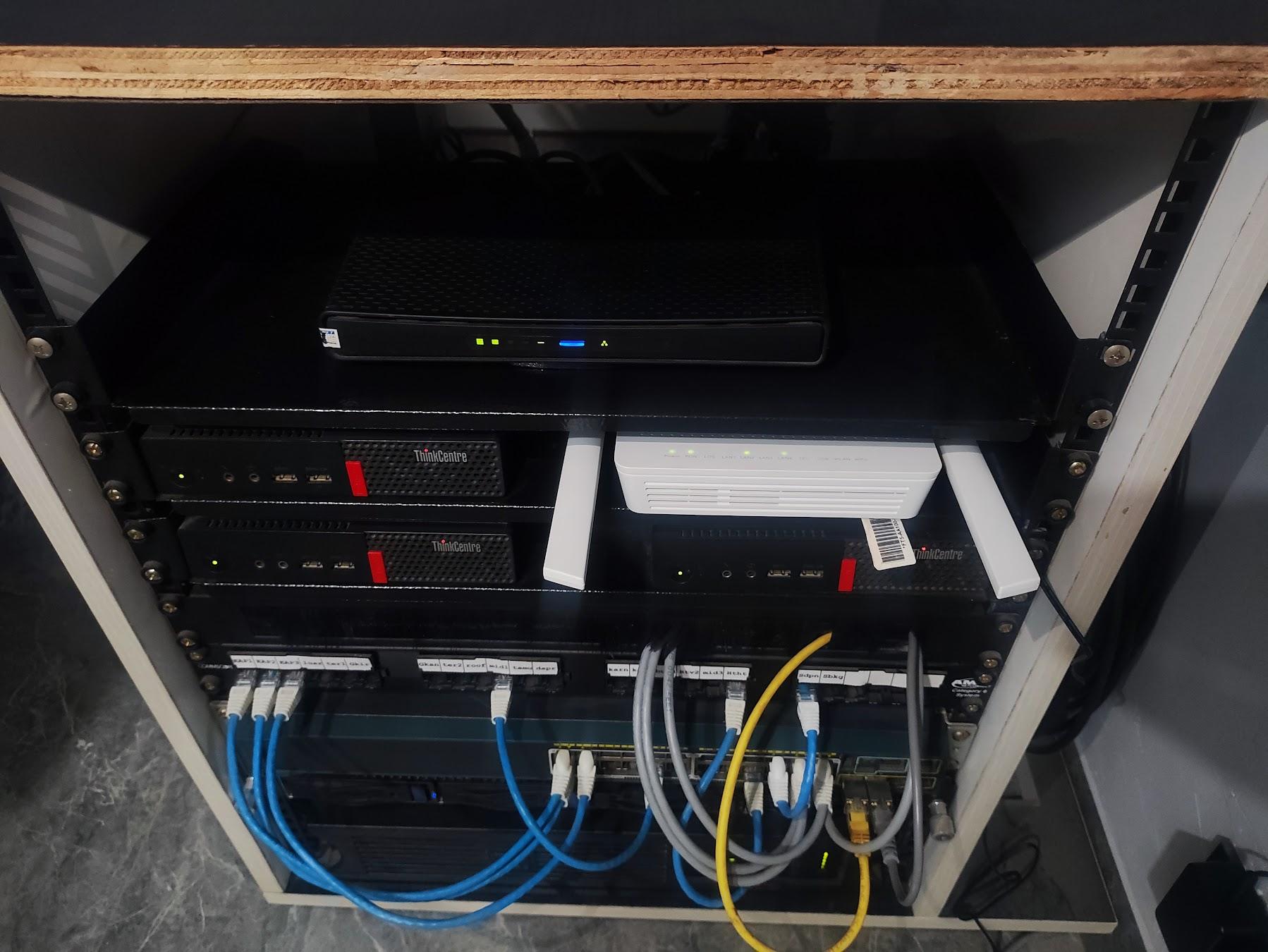
Power Efficient Homelab
Kevin Ariono / July 2, 2025
This is a fully fleged lab to explore enterprise IT and Networking concepts. I use this lab to deepen my understanding of systems and how they operate in the real world. With this setup i can experiment, troubleshoot, and deploy my own infrastucure.
Why?
When my home was being renovated from a single-floor to a three-story layout, I took the opportunity to design and deploy a custom network infrastructure to ensure seamless internet access across all floors. This project served both as a personal solution and a hands-on learning experience in home networking, topology planning, and systems administration.
Problems
The original layout of my house consisted of one single floor which makes my isp provided router sufficient for all of the house resident needs. After the renovation Wi-Fi coverage and overall internet reachability became major issues. Rather than rely on consumer mesh systems, I designed a scalable, wired-backbone network with centralized control to guarantee reliability and full coverage.
Not only that I also needed to design a system with relatively low power draw. I dont have funds to run an actual enterprise grade server with massive power draw and noise.
Solution
By considering the cost of the initial hardware vs the cost of running the hardware. I landed on the decision of buying second hand decommisioned office and enterprise equipment as well as low power entry level business solutions.
Stack and Tools
- Router: Mikrotik
- Access Points: TP-Link Omada
- Switching: Cisco Catalyst 2960s
- Backbone: Cat6 cabling between floors
- ISP Failover: Dual WAN setup with fiber connection and LTE
- LTE Modem: Dell dw5821e
- Server Nodes: Lenovo Thinkcentre M710 tiny
- Server OS: Proxmox VE
- Remote Access: Zerotier
Key Features
- Centralized router and firewall with VLANs for different users like guest and IoT
- Access points with roaming support for uninterrupted connectivity
- Local DNS and DHCP management
- Remote access to homelab services using secure VPN
- Power redundancy for key network gear (UPS)
- Speed-tested and tuned for optimal channel and bandwidth use
What I Learned
- Planning network topologies for multi-floor buildings
- Deploying and managing access points and VLANs
- Configuring a Mikrotik router with multiple interfaces and rules
- Setting up secure, remote, and fail-safe access to internal services
- Deploying VMs and contanerized services using Proxmox VE
Conclusion
This project wasn’t just about better Wi-Fi, it was about designing a reliable and scalable home network from scratch. It pushed me to apply real networking principles (like routing, segmentation, redundancy, and remote access) in a practical, real-world setting.